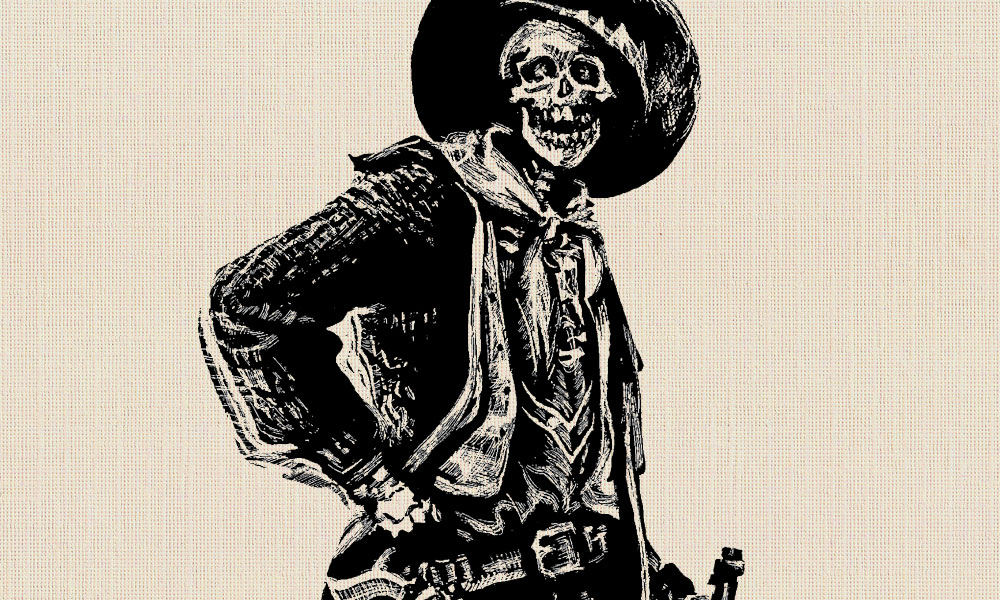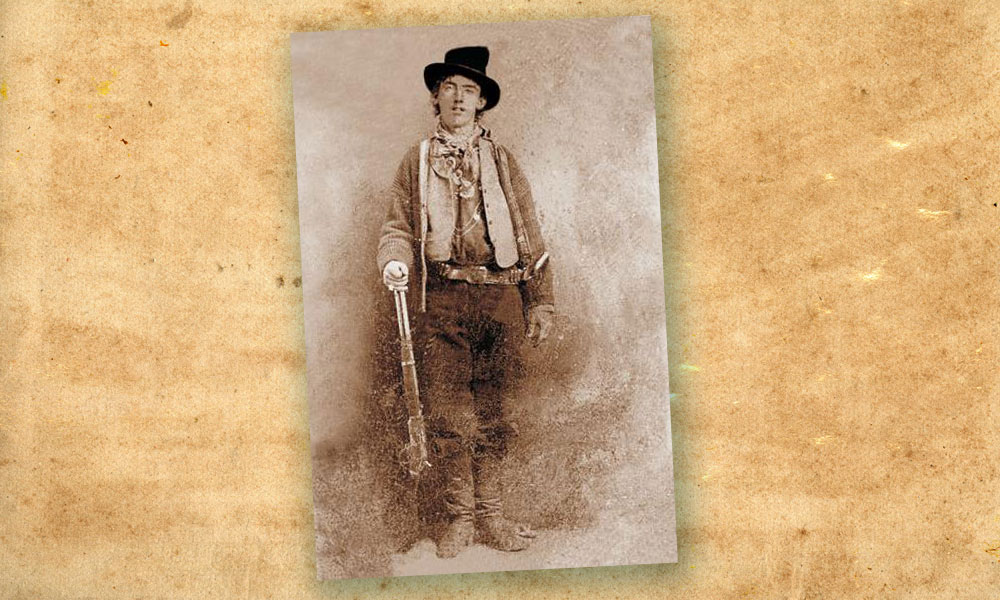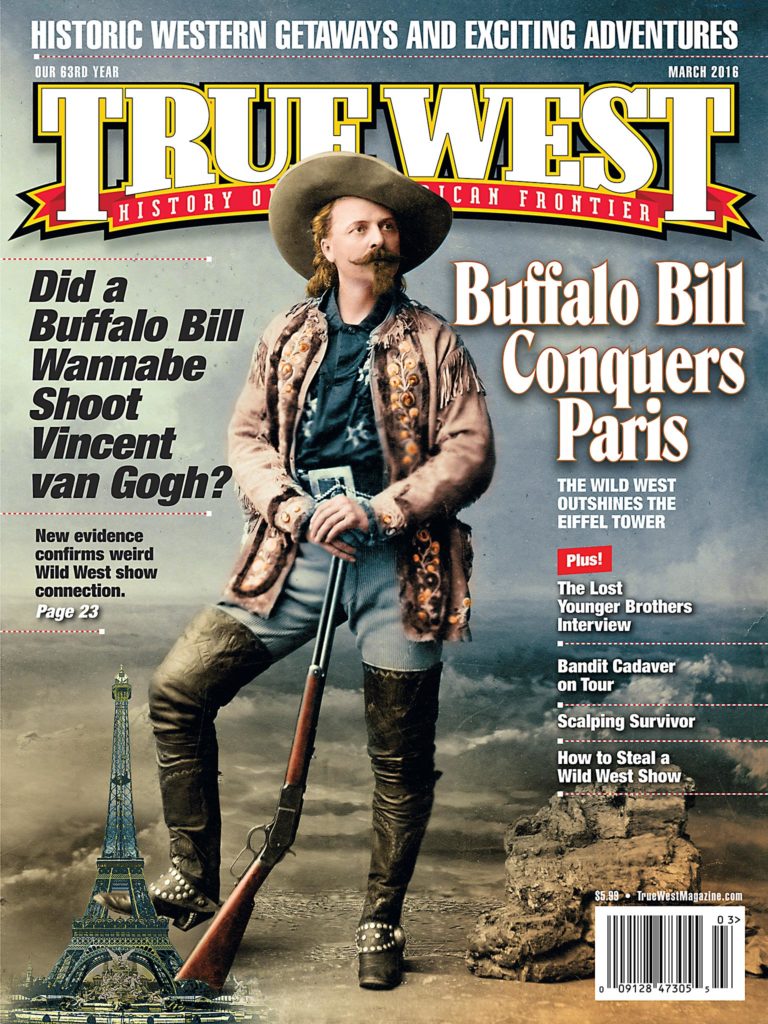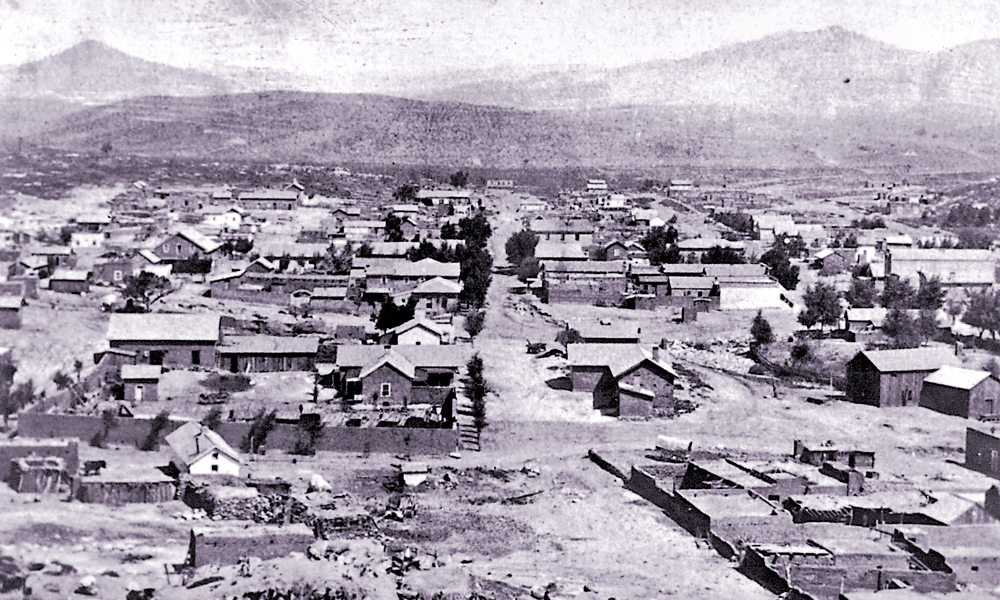
– Courtesy John Harlan Collection, Silver City Museum –
History knows Billy the Kid as a hothead with a hogleg. But he loves throwing us curveballs. As a boy running the streets of Silver City, New Mexico, he was a likeable sort, and now we read of a photograph that supposedly shows him playing that most civilized
game, croquet.
Really? Are there notches on his mallet?
The news has brought tourists to Silver City with new questions about our favorite outlaw. “They’re hot on his trail again,” says Visitor Services and Tourism Coordinator Rebecca Martin. “There are so many Billy fans running around, it blows my mind. I can’t explain it.”
Of course, frontier mania isn’t the only reason travelers come to this friendly high-desert town, population 10,000. At 6,000 feet, the weather is invariably gentle, making Silver City a year-round attraction for outdoors lovers.
The big draw is the Gila National Forest. After a 44-mile scenic mountain drive, visitors can be hiking the trail to the Gila Cliff Dwellings, built in the 13th century. The trail actually passes through rooms used by the ancient Puebloans as it rises 180 feet above the Gila River, gleaming on the canyon floor.
In-town attractions keep things plenty lively as well.
The Silver City Blues & Bikes Festival, which just celebrated its 29th year, takes place Memorial Day weekend. Every September, the Mimbres Region Arts Council puts on Pickmania!, an outdoor music festival featuring Southwestern bluegrass and folk artists, coupled with vendors offering regional foods.
If you’ve always wondered why clay never gets enough attention, Silver City has a festival in July to handle that. Through tours, workshops and demonstrations, visitors can see how contemporary artists use clay to express themselves, and how their indigenous forebears did the same long ago.
The Clay Festival is basically a bang-up party in the historic downtown district. Easily walkable at twelve blocks, the area features a dozen restaurants and more than 30 galleries and art studios that highlight various cultures that have left a footprint in southwest New Mexico, from the Spanish and Mexican, to American Indian, Anglo and the prehistoric Mimbres people.
The downtown Palace Hotel was built in 1900, in Victorian style, and the newly renovated Murray Hotel showcases an art deco look from 1938.
Notice the knee-high curbs on the sidewalks. Downtown was built at the convergence of two watersheds, making serious floods inevitable. The first occurred in 1895, bringing down a wall of water 12 feet deep and 300 feet across. Another flood in 1903 finished the creation of the Big Ditch, a 55-foot-deep gash through downtown, now a tourist attraction.
Visitors walk its footbridges and hike down under the cottonwoods lining the bedrock. “It’s like you’ve left town and gone into the woods,” says Martin. “It’s this wonderful outdoorsy space, a great place to take a break.”
That’s a hallmark of Silver City, the proximity of civilization and nature, contemporary life and rich history.
Did we mention Billy the Kid’s mother is buried in town?
Enough about our dime-novel hero, says Tracy Spikes, director of the Silver City Museum. With good cheer, he notes that the area offers many interesting stories that don’t involve cordite and mayhem.
His museum is housed in the 1881 H.B. Ailman House, named for a merchant who made and lost a fortune in the silver mines. Recently, Ailman’s great-great-granddaughter, Susan Garcia, paid a surprise visit.
She sat in the museum’s parlor room, perused archival photos of her ancestor and chatted about his diary. Ailman was distraught at having to leave town, concerned for the well-being of his customers, and the Chinese residents his wife volunteered to teach. The Ailmans were among the town’s noteworthy builders.
“Sometimes history seems so far removed,” says Spikes. “But in Silver City it walks in the front door. It was so nice to see that happen.”
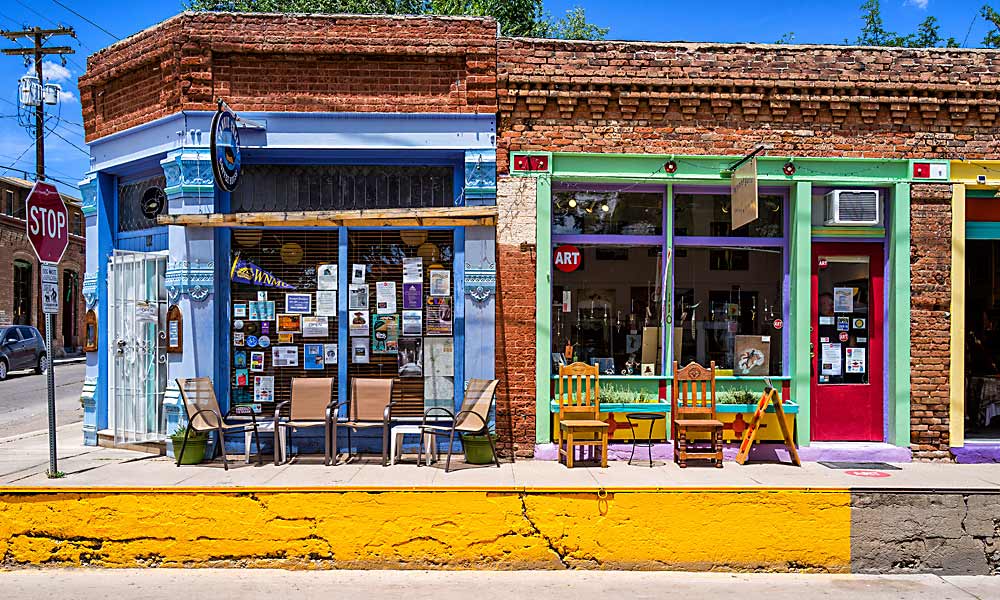
– Courtesy Silver City Arts and Cultural District –
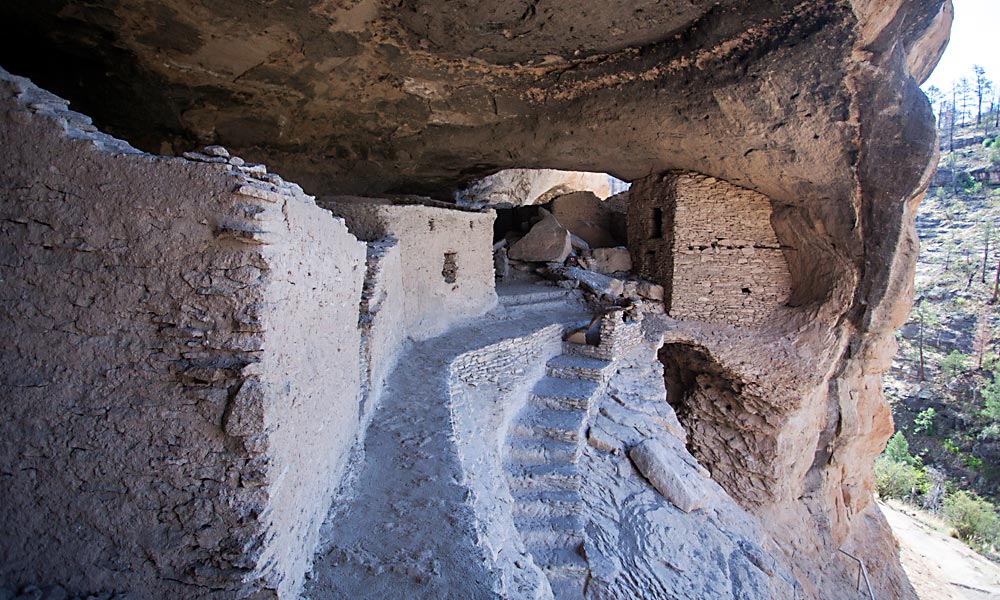
– Courtesy New Mexico Department of Tourism –
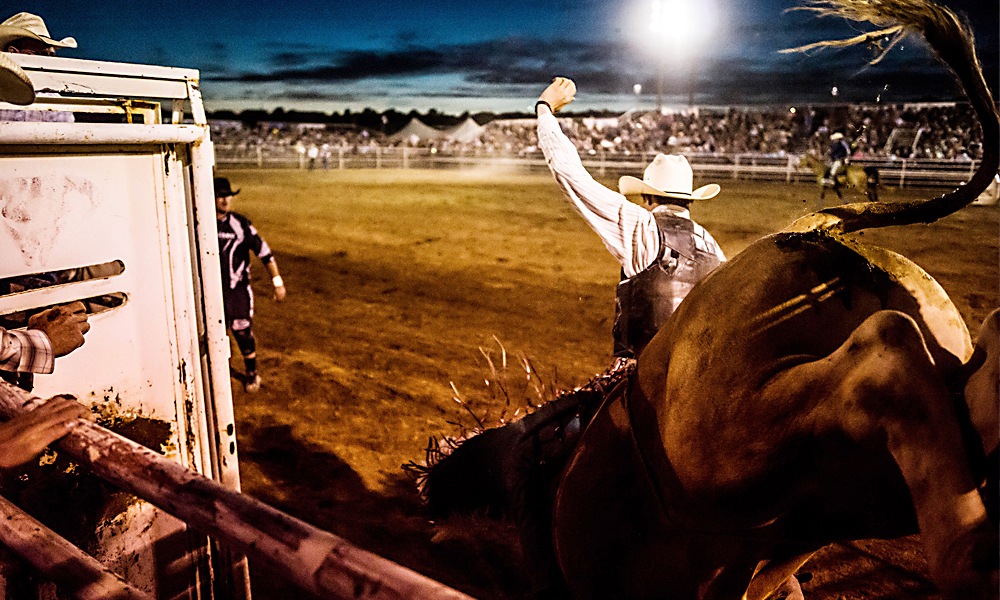
– Courtesy Silver City Arts and Cultural District –
Leo W. Banks is an award-winning writer based in Tucson. He has written several books of history for Arizona Highways.



